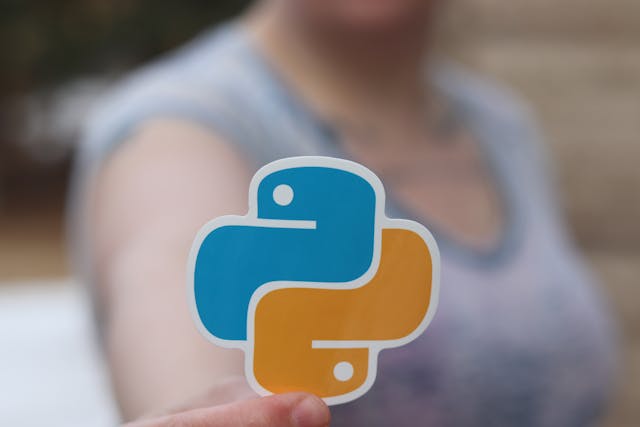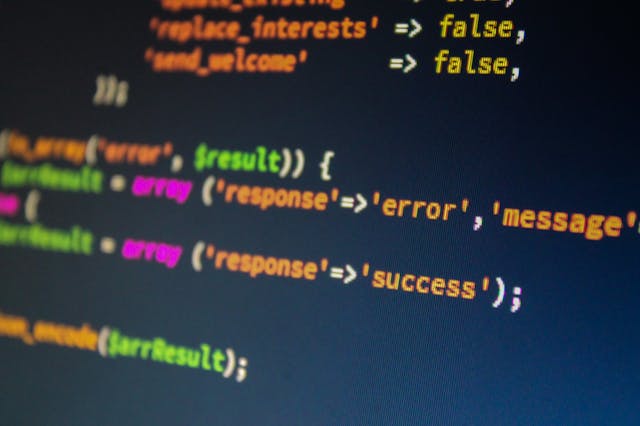The utterance ‘cmd python not found’ reverberates a quintessential vexation for blossoming Python students and artisans striving to deploy Python manuscripts from their command line or shell. This error communiqué is a signal that your system is unable to pinpoint the Python interpreter you’re seeking, thus thwarting any execution of Python scripts. The conundrum isn’t an anomaly; it’s a familiar tableau in diverse developer forums and coding collectives.
Frequently, this error emerges as an offshoot of Python escaping detection in the command line. At its core, it’s a path predicament focusing on how the command line or shell traces the whereabouts of the Python executable. If the system’s Path variables are misaligned, then summoning Python from the command line might culminate in this labyrinthine error message. To truly comprehend this issue necessitates delving deeper into understanding how path variables and command lines interplay within your operating framework.
The Role of Command Line in Running Python Scripts
In the realm of Python scripting, one cannot help but underscore the pivotal role command line interfaces play. A conduit for unmediated interaction between user and operating system, it’s a tool that enables execution of Python files, installation of packages or modules, and myriad other functions integral to Python programming. Yet there is an enigmatic issue often faced by those traversing this path – ‘Python Not Found in cmd’, an error message that leaves many bewildered.
The question “Why isn’t my command prompt recognizing Python?” reverberates through developer communities with puzzling frequency. The root cause? An elusive glitch within the operating system itself – its failure to pinpoint the location of the all-important Python interpreter. This perplexity stems from misconfiguration issues surrounding environment variables; more specifically related to incorrect PATH settings.
Achieving tasks via command line interface necessitates accuracy in configuring these settings – a precision that allows seamless operation while also enabling detection of Python by your operating system without any hitches or glitches.
Deciphering the Reason Behind Python Not Being Detected in Command Line
Grasping the reason why Python is not detected in the command line demands a refined understanding of how command line interfaces, such as cmd, interact with installed software applications – Python being our case in point. More often than not, the failure to locate Python via cmd stems from its installation path not being correctly embedded into what we refer to as the ‘PATH environment variable’.
The query, “Where can I find Python in cmd?” is frequently encountered by those who are novices at using Python. To tackle this issue involves tweaking your computer’s system settings so that there’s an unmistakable reference point for locating the Python interpreter. Without these connections firmly established within one’s system operations’ backdrop, any attempt made by the command line to execute Python will result in an error message. An effective countermeasure would be ensuring that the pathway where you’ve installed python becomes part and parcel of your system’s environmental variables. Let’s dive deeper into how this could be achieved on different operating systems.
The Importance of Path Variables in Locating Python
In the intricate labyrinth of programming and software development, path variables stand as crucial lighthouses, particularly when navigating Python. Functioning akin to navigational beacons, these path variables guide your system in its quest for the elusive executable files of the software. A misstep or absence in setting up these guiding light posts often culminates into a foreboding error – ‘Python not found’, even when Python dwells unseen within your system’s confines. To simplify it further, just as younglings require familiar landmarks to navigate their way to school or park, so does your computer relies on path variables to locate and utilize Python.
Python has painted an enviable reputation for itself with its user-friendly syntax and simplicity making it a favored tool for teaching programming basics to children. Its appeal has spawned several educational endeavors such as “Python for Kids”, designed with the noble aim of fostering coding skills among fledgling minds. However, casting long shadows over this success is the prerequisite that Python must function flawlessly where path variables don a pivotal role. Hence grasping and correctly adjusting these guiding markers are not only cardinal tasks for veteran coders or software professionals but also indispensable learning steps for those sprouting programmers who are taking their first tentative steps into Python’s universe.
Steps to Verify Python Installation on Your System

Prior to plunging into the depths of relentless coding marathons or deciphering a maze of intricate scripts, it’s absolutely indispensable to certify that your Python environment is adroitly set up on your system. An inaccurate installation or misaligned settings could often trigger unanticipated complications, disrupting your overall rhythmic flow. Drawing attention to an anomaly by springing an unexpected ‘Python Not Found’ error message, your system might perplex you in bewilderment if you fail to recognize the significance of validating your Python establishment.
The preliminary step towards affirming the legitimacy of your Python setup calls for a straightforward command execution. By way of wielding control over your system’s command line, execute the ‘Python –version’ command which would consequently disclose the installed version of Python – a clear indication of successful installation should it exist. On the contrary, if this particular command falls on deaf ears within console’s confines then it hints at possibly two scenarios – either Python has yet not been installed or its path variable hasn’t been accurately configured. Both circumstances demand immediate redressal without any further ado.
How to Correctly Set Python Path in Windows
Decoding the intricate maze of Python path setting in a Windows system is at the core of flawless script execution. Unlike some digital habitats such as MacOS or Linux which come readily equipped with pre-installed Python, Windows necessitates an extra layer of manual groundwork. This incremental step might seem tangled in complexity but remains vital for empowering the operating system to immediately pinpoint and activate the Python interpreter when beckoned by a command or script.
To those standing on unfamiliar grounds, it’s worth noting that the Python path is akin to a digital compass within your computer, directing Windows towards locating not only the Python interpreter but also its scripts scattered around various system corners. While installing Python does provide an option to auto-set this elusive path, it often escapes user attention like fleeting shadows. In such scenarios, manually adjusting this path becomes more than just probable—it turns into necessity itself. Mastering this task paves ways for smooth sailings with zero errors during your journey through coding while simultaneously boosting your overall efficiency.
Addressing Common Issues in Python Path Setting in MacOS
In the world of MacOS, Python path configuration can be a source of bewilderment at times. Even after successfully completing Python’s installation on your system, you might stumble upon an unexpected error message stating ‘python not found’ whilst running Python scripts. This issue customarily sprouts from erroneous Python path settings which insinuates that the command line interface is groping in the dark to locate the elusive Python interpreter.
As a countermeasure for this predicament, users are urged to inspect their existing Python environment variables with an eagle eye to confirm if they are pointing towards the correct location of their installed python executable file. The ever-reliable Terminal can be summoned and armed with a command – ‘echo $PATH’, which acts as a divining rod revealing all set paths currently active within your system.
If upon executing this command, you find no trace of your beloved Python’s installation directory among these results; it screams out loud for amending or appending missing pieces into your PATH variable. Path adjustments can be performed gracefully via Terminal using Bash commands – but remember! It is absolutely crucial to tread carefully during this procedure: any reckless tampering with system path variables could inadvertently pull out essential wires causing other software or utilities within your machine to run haywire.
FAQ
The cryptic phrase, ‘Python Not Found’, typically implies an inability of the system to pinpoint the Python interpreter’s location. This confusion generally stems from incorrect or incomplete path settings within your system’s environment variables.
The command line serves as a paramount interface for initiating Python scripts. It provides a platform to execute Python commands, run script sequences and install supplementary libraries or packages. Frustratingly, if there is an error with setting up Python’s pathway correctly, it could lead to non-recognition of python commands by the command line resulting in errors.
If your command line remains oblivious to Python despite its installation on your system then we’re likely dealing with a case of erroneous path setting. For seamless detection and execution of python commands by your command line, ensure that your system environment variables have been fed accurate information about where exactly on your computer python has taken residence.
The significance laid upon these path variables when locating python arises due their role as guides directing the way towards specific files such as our friend here – the elusive python interpreter. When these paths are either not set appropriately or remain unset altogether; this impairs systems ability to locate and hence operate using python.
To lay down the correct tracks for locating your Python installation in MacOS, you just need to add Mr.Python’s address (location) onto the PATH environment variable. This is achieved by editing either .bash_profile or .zshenv file situated in your homestead directory, extending an invitation to Mr.Python by appending his residence details i.e., installation directory.
A few habitual culprits hindering successful mapping of python pathways include misinformation or entirely missing information about its location within the PATH environment variable; multiple personalities(versions) of Mr.Python causing a ruckus; or permission related hiccups intervening while modifying system files.


